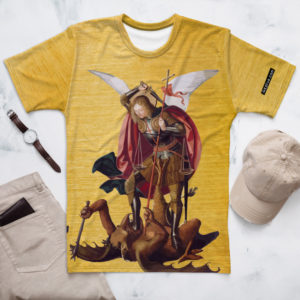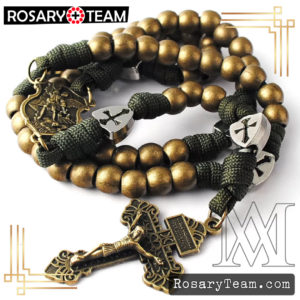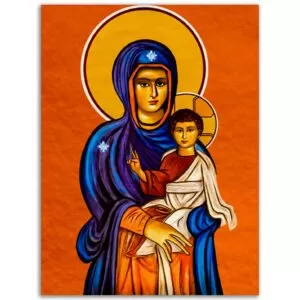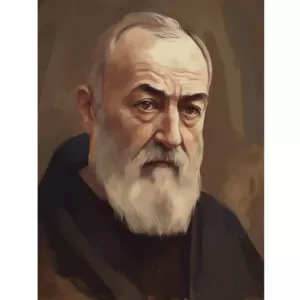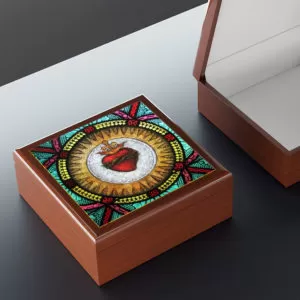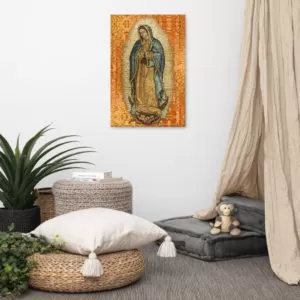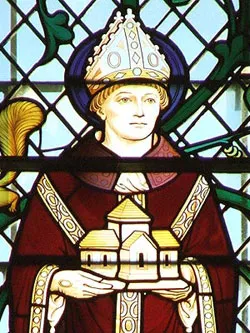SAINT LEO THE GREAT
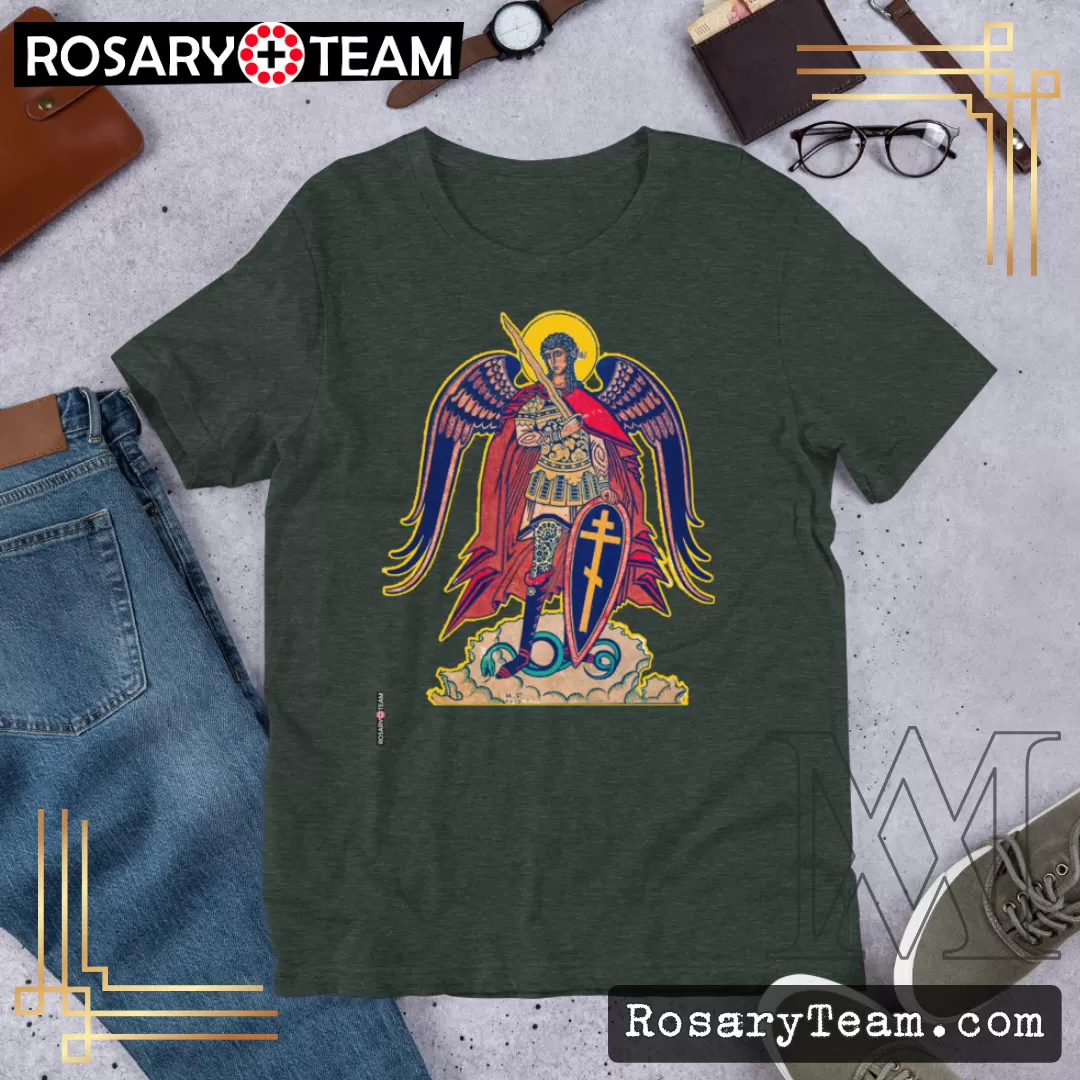
SAINT LEO THE GREAT
Pope Saint Leo the Great 440-461 is the first Pope who is a Doctor of the Church. Saint Leo followed after the glorious Popes: Saints Damasus, Siricius, Anastasius I, Innnocent I, Zosimus, Boniface I, Celestine I and Sixtus III, all of whom, as with one voice, had proclaimed that when they spoke in papal utterance, they spoke through the mouth of the Prince of the Apostles, Peter.
Pope Saint Celestine I 422-432 is the Pope of the Third Ecumenical Council, at Ephesus, which deposed and anathematized Nestorius, the heretical Bishop of Constantinople, who taught that Our Lady was not the Mother of God. Saint Celestine was the Pope who sent Saint Patrick to Ireland.
Pope Saint Leo the Great bore in his hands the keys of Peter and the sword of Paul; that he bore them for twenty-one years without haste, without passion, without fear, with the serene dignity of one whose eyes were ever fixed on the Lord Whom he represented. Known for his great learning and holiness, the deacon Leo, son of the Roman, Quintianus, was unanimously elected Pope, in August 440, while he was absent in France on a mission for the Emperor.
“More than forty days the Roman Church was without a bishop,” Saint Prosper
wrote, “awaiting with wonderful peace and patience the arrival of the deacon Leo.” This alone is high praise of the virtues of Saint Leo, for the times were such as to awaken the extreme opposite of peace and patience in the hearts of men. Pope Leo the Great mounted the throne of Saint Peter at a time of terrible danger, both for the Church and the Empire.
The fierce barbarian tribes had been on the march for the whole of the century, plundering, ravaging and threatening the entire Empire. The dreaded Attila, the self-designated” Scourge of God,” who left in the wake of his savage army burned churches, murdered priests, devasted countrysides, people ravished and maimed, impoverished and homeless was on his way into Italy. The great Saint Augustine died with the knowledge that the Vandals were at the gates of Hippo, his episcopol city, the great Saint Augustine.
It was with the keys of Saint Peter in his hand that Saint Leo wrote his “Dogmatic Epistle” against Eutyches, the heretic, and saved the Faith. It was with the sword of Saint Paul, and unknowingly the vision of Saint Peter above him, that he overcame Attila the Hun and later Genseric the Vandal saving Rome.
The dogmatic letter of Saint Leo or (Saint Leo’s Tome) is one of the most precious documents of the Church. The story is told that when Pope Leo finished it he placed it on the tomb of Saint Peter. He implored the Chief of the Apostles on whom the Church was founded to correct it with his own hand. He then fasted and prayed for forty days and forty nights then returned to the tomb for the letter. He found that Saint Peter had answered the prayer of his humble successor.
The violence inflicted upon him in the “Robber Synod” of Ephesus, where he defended the two natures of Jesus, the divine and the human, against the heretical Abbot Eutyches who declared there was but one nature, the divine in the Saviour of Mankind. The heresy of Eutyches denied the reality of the flesh of Jesus. Eutyches made him out to be not a true man and Our Lady out to be not true mother. Saint Leo wrote: Eutyches there shows himself as in a high degree ignorant and lacking in intelligence. What knowledge of the Old and New Testament can he have who does not even understand the beginning of the creed? And that which the catechumens throughout the whole world confess, the heart of this old man cannot comprehend. If he did not know what he ought to believe respecting the Incarnation of the Divine
Word, and would not search throughout the whole Scriptures on the subject, then he ought to have adhered to the creed, which all know and confess: To believe in one God, the Father Almighty, and in Jesus Christ His only Son Our Lord, who was born by the Holy Ghost of the Virgin Mary. By these three propositions almost every heresy is overthrown. If one believes in God the Father Almighty, then is the Son declared to be eternal with Him, differing in nothing from the Father, because He is God of God, Almighty of Almighty, Co-eternal of the Eternal, not later in time, not inferior in power, not unequal in glory, not divided in essence. And this only-begotten Eternal Son of the Eternal Father was born by the Holy Ghost of the Virgin Mary.This birth in time has taken nothing from, and added nothing to, the eternal birth from the Father and its only end
is the Redemption of men. For we could not overcome sin and the author of death, unless our nature had been assumed and made His own by Him Whom neither sin could stain nor death
could hold.
He was conceived by the Holy Ghost in the womb of the Virgin, and she bore Him without
injury to her virginity. Then the properties of both natures and substances remained uninjured united in one Person, lowliness was assumed by majesty, weakness by strength, mortality by
eternity. He Who is true God is at the same time true a man and in this unity there is no lie, for the lowliness of man and the loftiness of God have penetrated each other .
He Who is one and the same is truly Son of God and truly Son of man. God in this, that “in the beginning was the Word, and the Word was with God, and the Word was God”; man in this, that “the Word was made flesh, and dwealt among us”; God in this, that all things were made through Him, and without Him nothing was made; man in this, that He was made of a woman, and under the law.
The birth of the flesh is the revelation of human nature; the being born of the virgin is the sign of divine power. The weakness of the child is shown by the lowliness of the cradle. The glory of the Highest is proclaimed by the voice of the angels. He is like to the children whom Herod wishes cruelly to slay; but He is Lord of all, Whom the wise men rejoice humbly to adore. And that it might not be concealed that the Godhead is covered by the veil of the flesh, the voice of the Father called from Heaven: “This is My beloved Son.”
Man is tempted by the cunning of the devil. God is ministered to by the angels. Hunger, thirst, weariness, and sleep are evidently human; but to feed five thousand men with five loaves, to walk on the sea, to command the storms, is without doubt divine. As it does not belong to one and the same nature to bewail a dead friend with deep compassion, and to call him back to life when he has been four days dead, or to hang upon the Cross and to make the elements tremble, so it does not belong to one and the same nature to say: “I and the Father are one,” and “the Father is greater than I.” For although in Jesus Christ there is only one Person of God and man, yet the common glory and the common lowliness of the two natures have a different source. From us He has the manhood, which is inferior to the Father; from the Father He has the Godhead, which is equal to the Father .
The heresies of Nestorius and Eutyches did not die along with their founders but are to be found today existing in several countries where their followers are known still as Nestorians and Monophysites. Eutyches was banished several times and finally died in a remote and deserted part of the world. Nestorius died of a cancer which rotted his tongue and was consumed by worms. A fit punishment for that tongue which had uttered so many blasphemies against Jesus Christ and His Holy Mother.
In 452 Attila the Hun burned, sacked and destroyed Aquileia. A city in northeastern Italy at the head of the Adriatic Sea. On his march to Rome he boasted that the total conquest of Italy was to be his crowning work of destruction. Rome was the dowry which he planned to present to his bride, Honoria, the granddaughter of the great Theodosius!
Rome had no defense. The Eternal City was saved, not by its legions, its tribunes, its senators, or its suffering citizens. Rome was saved by its Bishop, the Holy Roman Pontiff.
Pope Leo went out to meet Attila the Hun. He climbed steadily northward and over
the mountains and found the Mongolian chief below Mantua. Attila’s troops were ready and waiting to cross the Po when Saint Leo entered the disordered camp and stood before the King of the Huns. The Pope threatened Attila with the power which was his from Peter, the Prince
of the Apostles, if he did not turn back and leave Italy unmolested. And it is one of the most dramatic, of all the dramatic facts with which the story of the Church is so enchantingly full, that Attila, the Hun, yielded before Leo, the Pope. The “Scourge of God” agreed to turn back. He gave up Rome. And Leo, absorbed in thanksgiving, returned to his See.
Attila’s servants asked him why he had reversed his custom and capitulated so easily to the Bishop of Rome. The brigand chief answered that all the while the Pope was speaking Attila was himself consumed in fear for there had appeared in the air above the Pope’s head a figure in the dress of a priest, holding in his hand a drawn sword with which he made as if to kill him unless he
consented to do as Leo asked. The figure was that of Peter!
In 454, Saint Leo confirmed the doctrinal decrees of the Ecumenical Council of Chalcedon. And in 455, once again went out to meet the invader. This time it was the Arian Vandal King, Genseric. Saint Leo was able to dissuade him from plunder. For fourteen days, Genseric’s army pillaged Rome but the Romans, thanks to the Pope, remained unharmed.
On the 10th day of November, 461 Pope Saint Leo died a deeply holy death. Saint Leo’s battles had been fought at every hour of his blessed pontificate, against the seed of her everlasting enemy, Lucifer.
rosary.team


